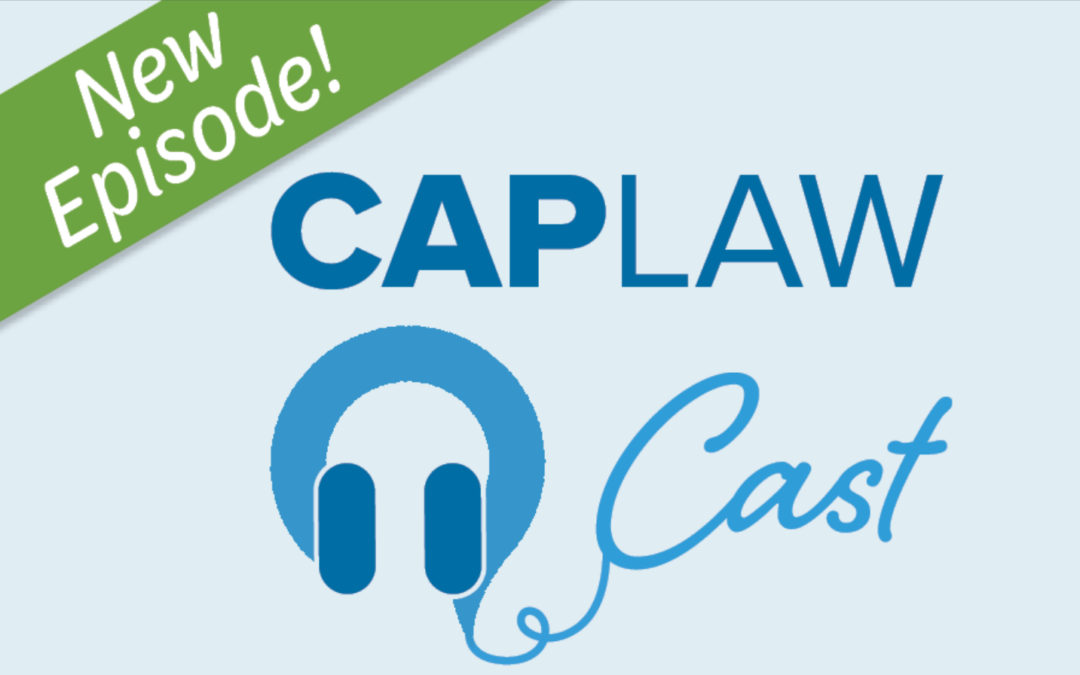Resource Library
All of CAPLAW’s resources and publications are now available in CAPLAW’s new Resource Library. Use the search filters below to find the resource you need.
Featured Resources

Bylaws Toolkit
This updated Bylaws Toolkit will help CAAs develop bylaws that are clear, effective, and up-to-date. The toolkit outlines key concepts for an agency’s bylaws, such as the authority of the Board of...

Dynamic Duos Podcast
Mutual respect and trust between leaders at a Community Action Agency (CAA) is essential to the stability of the organization. Without a strong relationship between a CAA board chair and executive...

Tips on Preparing for a Possible Government Shutdown
With the possibility of a federal government shutdown looming, what should CAAs be doing to prepare? Review 10 tips to consider when preparing for a possible shutdown. Summaries of federal agency...

Sample Conflict of Interest Policy for Senior Staff (Head Start)
CAPLAW's Sample Conflict of Interest Policy for Senior Staff of a CAA with a Head Start program helps senior staff manage conflicts of interest as required under the federal CSBG Act and Head Start Act. CAAs can use these templates to update their own policies for compliance and to ensure greater...

Sample Subrecipient Pre-Award Risk Assessment Tool
CAPLAW's Sample Pre-Award Risk Assessment Tool helps a CAA conduct the required pre-award risk assessment prior to subawarding federal funds. The tool also describes the differences between a subcontractor and subrecipient relationship under the Uniform Guidance.

Legal Issues Unique to CAAs
Working with Community Action Agencies (CAAs) on legal matters can sometimes be challenging for outside counsel. The myriad of federal grants that CAAs receive requires compliance with layers of requirements that can make seemingly simple issues more involved and complex. In this two-part webinar...
WIOA Resource Guide
This guide is intended to help CAAs find resources related to the Workforce Innovation and Opportunity Act (WIOA). This resource serves as a one-stop center for the myriad of WIOA requirements in statutes, regulations, and guidance from multiple federal agencies.

Mergers as a Strategy for Success
Many nonprofit organizations view mergers as a last resort, a reaction to financial distress or leadership vacuum. But what if CAA leaders considered mergers proactively—as a way to encourage organizational growth, strengthen effectiveness, replicate best practices—and to do so in a cost-effective...

An Exploration of Shared Administrative Services
Faced with government budget cuts and increased competition for funding, CAAs are exploring various alternatives for sharing or combining resources to reduce their operational costs and increase their efficiency and effectiveness. Sharing administrative services with another organization can also...

Political Activity: Playing by the Rules
This webinar discusses the laws that govern how CAAs engage in political activity, and will address questions such as:What is political campaign activity and how is it different from lobbying and advocacy?Can our CAA get involved with activities like voter registration, voter education, candidate...

Understanding Advocacy and Lobbying Rules
This webinar focuses on advocacy and lobbying and addresses questions such as:What is the difference between lobbying, advocacy, and education?What kinds of activities are considered lobbying, and what are not?How do we lobby while staying within Internal Revenue Service and federal grant...

Navigating Retirement Plan Fiduciary Rules and Plan Errors
In the second webinar of the Keeping Your Organization's Retirement Plan in Shape webinar series, a seasoned retirement plan attorney covers what your organization must do to fulfill the fiduciary responsibilities of a plan sponsor under the Employee Retirement Income Security Act (ERISA), and the...
